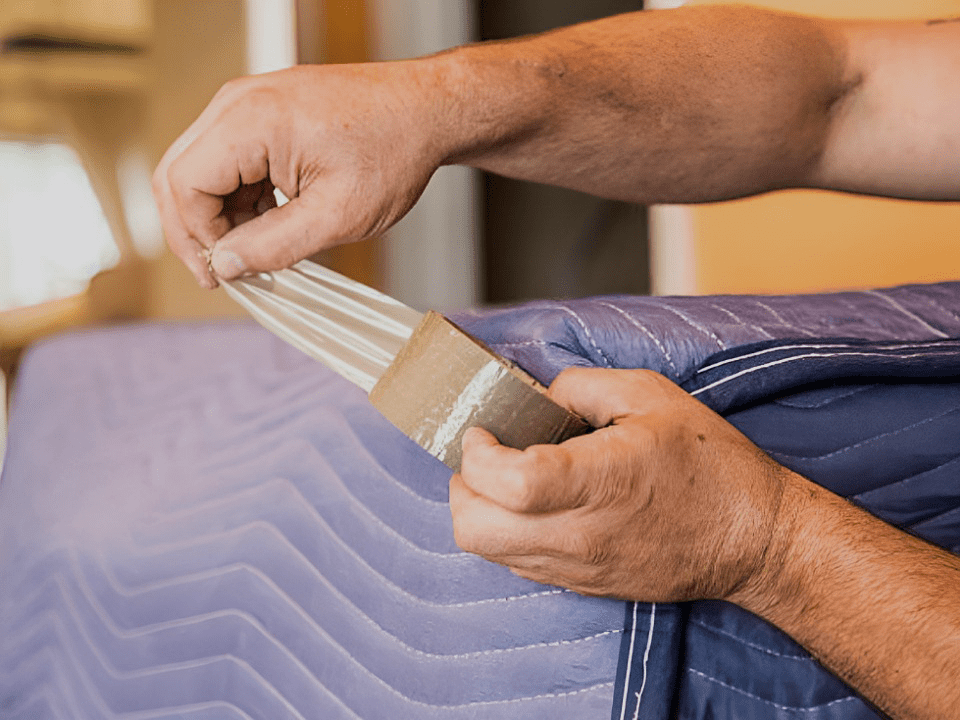HOW TO LIFT HEAVY ITEMS WITHOUT INJURY
Kinetic lifting: How to avoid injury while moving objects
Moving heavy items can seem like a straightforward task at first. However, there is a significant risk of injury, especially as you could hurt your back or even drop the item onto your feet. If you tend to move weighty goods as part of your employment, your employer has to provide the correct training on how to lift heavy items. For the rest of us, understanding how to lift heavy items is something that we have to learn for ourselves. You can never be too careful when it comes to lifting a heavy object – such as when it comes to moving a fridge – so here we reveal how to avoid injuring yourself using the kinetic lifting principle.
Kinetic lifting: How to avoid injury while moving objects
Moving heavy items can seem like a straightforward task at first. However, there is a significant risk of injury, especially as you could hurt your back or even drop the item onto your feet. If you tend to move weighty goods as part of your employment, your employer has to provide the correct training on how to lift heavy items. For the rest of us, understanding how to lift heavy items is something that we have to learn for ourselves. You can never be too careful when it comes to lifting a heavy object – such as when it comes to moving a fridge – so here we reveal how to avoid injuring yourself using the kinetic lifting principle.
What is kinetic lifting?
Kinetic lifting is the process of manual handling weighty objects without the use of machinery or tools. Kinetic lifting techniques are a method of lifting an object without instigating an injury.
Some common injuries caused by lifting heavy goods include:
muscle strains
tendinitis
back and elbow injuries
spinal damage
injured knees
By using kinetic lifting methods which are designed to ensure a good posture, proper lifting and manoeuvring, the risk of injury is substantially reduced.
How to lift heavy items using kinetic lifting techniques:
Avoid injuries by using these effective kinetic lifting techniques. Follow each kinetic lifting method, step-by-step, to ensure you move your heavy object safely and securely.
1. Assess your item
First, it’s a good idea to assess your item. Even small boxes can be heavier than you think so examine it to ensure it’s a weight you can safely manage. Kneel in front of your object and gently slide it from side to side. This will give you a good impression of whether you can safely lift it or not. You can also try lifting a corner of the item too to determine its full weight. If it’s too heavy, ensure you enlist another person to help you. You’ll also need to assess if it’s a fragile item or not. See our article on How To Pack Fragile Items.
2. Clear Your Route
Before you begin to move your item, examine your route to determine how far you need to carry it, if you’ll be travelling up or down any stairs or if there is anything that may block your path. Clear any trip hazards out of the way. If you have a long route, you’ll probably need to take a break part way through your journey.
3. Form the Correct Position
Move your feet so that they are shoulder width apart. Keep your feet here but slightly move one so that it’s in front of the other. If you’re moving a bulky object like a long table, stand facing one of the long sides.
Your back and neck should remain as straight as possible. Do not attempt to bend over as this increases the risk of injury. Instead, bend your knees to form a squatting position, keeping your abs tight. This will allow you to keep your balance. Place your hands on the item with a good grip. Each hand should be placed at either side of your object. However, if it’s not overly heavy, you can place your hands underneath. Just ensure that your item is as stable as possible and will not slip out of your hands. You can wear gloves if it’s going to enhance your grip.
4. Lift Your Object
Once you’re holding the object, attempt to lift the item and gradually move back to a standing position. Clasp the load close to your body, around the waist area. You should maintain a straight as possible posture as attempting any rapid twists or turns can result in pulling a muscle or injuring your spine.
5. Begin to Move
It’s important to take small steps as you begin to move. Your movements should flow as smoothly as possible; however, this can be more challenging if you have to go up or down a set of stairs. If you feel like you may drop the item, stop moving and place your item back down.
6. Place Your Item Back Down
It can be tempting to place your item back down quickly. Using the same approach as you lifted it is the most effective way to guarantee a smooth transition. Bend your knees and squat down with the item in front of you. Place it on the floor or surface with both hands until it is safely down. Remember to ensure that your back and neck are straight.
If in Doubt, Call in The Professionals – We Can Help!
Now you know how to lift heavy items using the kinetic lifting principle, you can move these objects without causing harm to yourself or others. Do you need extra assistance moving and storing bulky items? MaxiMove LTD offer a flexible all-in-one approach to storage and removals across the North West – so you won’t need to lift a finger. Get your free quote from us now.




